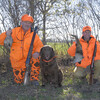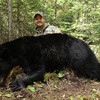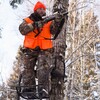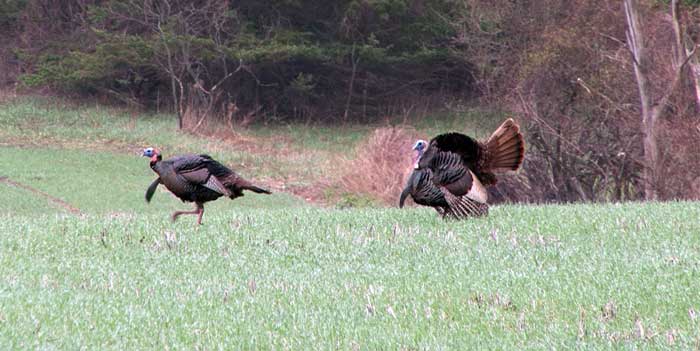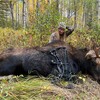
Wild Turkey From A Blind
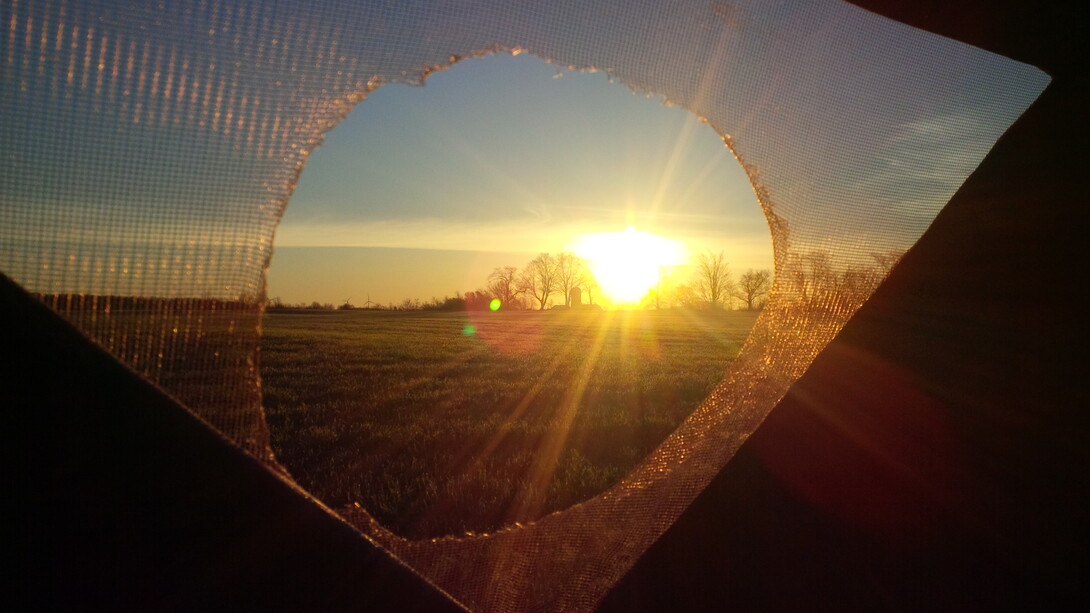
The opening morning of any fish or game season is a time of high expectation. All that fantasizing, reminiscing, and planning tends to get the juices flowing. When the opening day requires you to drive 15 hours south, the level of expectation gets ramped up even more. That's one reason I get so excited about wild turkey hunting.
Yet explaining the allure of sitting under a tree or in a blind, trying to call in an old gobbler, is hard to do to the uninitiated or non-hunter. It defies logic. The 4 am wake-up calls. The trudge through muddy fields in the dark. The sore bums from sitting on Hawthorne. Yet when you first hear the thunderous rattle of a big tom answering a hen call and see that red and white head coming through the trees, I defy a hunter to not be pumped. It's just not possible. Most of my turkey hunts have been done from the ground and generally while sitting under a tree. That's old school. On this hunt, however, I'd decided to try a ground blind. It was a good call.
So, as the sun was coming up over the field, I was sitting in a blind north of Kincardine, feeling expectant. It was drizzling, but that didn't dampen my enthusiasm. I put my two Avian x decoys out, then snuck back to my blind and put a mouth call in. I then made a couple of hen clucks.
Chuck, chuck! The hen calls echoed over the field. Gobble, gobble!
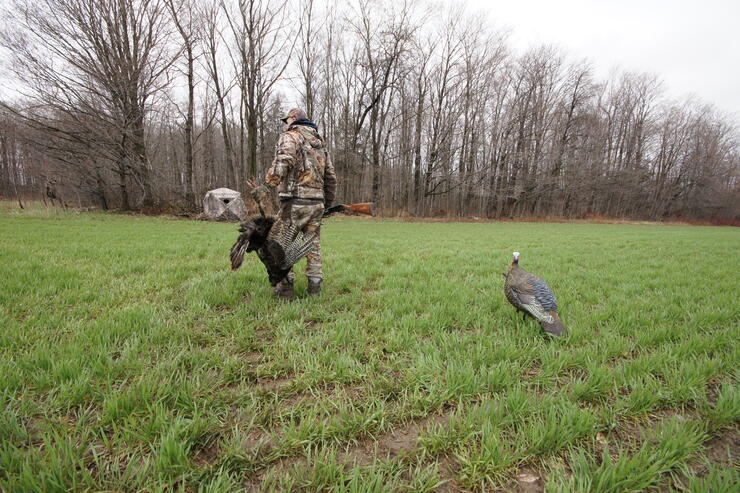
An instant reply. That is a good thing when turkey hunting. A few more gobbles were heard, and then a hen and young tom turkey or jake appeared on the field to my left at 120 yards. I was able to slowly turn and range the birds as I was in a ground blind. Blinds are much more forgiving than sitting on the ground exposed. The pair of turkey seemed intent on feeding and were mostly ignoring my calls. However, the two very realistic-looking decoys did get the jakes attention. He could not help but notice my plastic jake decoy was being attended by a very sexy plastic hen. Jealousy kicked in.
So after five minutes of staring, the jake started coming, hen in tow. In the spring, you can only take a bird with what's called a beard—a bunch of hairs on the turkey's chest—and so the hen was off-limits. The jake was not. That jake got his fan up and started dancing around his plastic twin. Then he bumped the decoy with his puffed-up chest. It was time. I clicked off the safety on my shotgun, dropped the bead to the bird's head, and squeezed. The turkey never knew what hit it, and tag #1 was filled at 6:30 am. The young tom weighed a respectable 18 pounds.
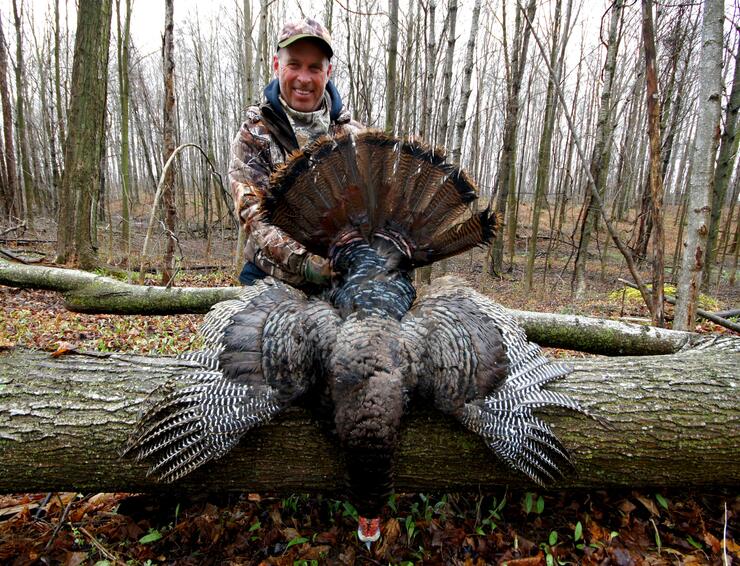
The next morning, I was back in the same spot. Rain was coming down in buckets, and I was very happy to have a blind to sit in. I heard a lone gobbler early, but then it got very quiet for an hour or so. There was not even much distant gobbling. All the birds seemed hunkered out of the rain. At about 7:30 am, I'd not heard anything for a while and started to get aggressive. I leaned out the window and started working a loud, wooden box call. This call is activated by scraping a wood cover across the top of a hollow wooden box. It makes an uncanny hen call.
No sooner had the clucks been made than a gobble sounded off very close. I looked out the opposite window and could see a gobbler in the field. He was making his way to the decoys, but I sensed he saw me. The bird stopped, stared at the jake for a bit, then began to turn away. It was a long shot—over 40 yards—but I'd put a new super tight Primos "jellyhead" choke on my 11/87 and felt confident my shotgun could do the job. With rain coming down, I aimed and squeezed the trigger, and that big gobbler was down. It weighed 22 pounds and had a nine-inch beard and one-inch spurs.
My turkey hunt was over in two mornings, but what a time it had been.
And yes, I think I'm sold on turkey hunting from a ground blind.
Recommended Articles

Moose Outfitters in Ontario
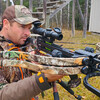
A Whitetail Hunt with Border Country Outfitters

Spring Scouting
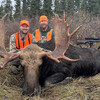
Remote Shoreline Moose Hunting
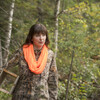
Becoming a Trapper
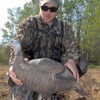
Ontario Turkey
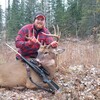
26 Amazing Whitetail Hunting Lodges in Sunset Country

Fly-in Moose Hunting

Cooking Wild Game: Venison Kofta Kebabs
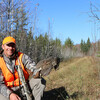
Grouse Hunting in Sunset Country

Crossing the Border into Canada
First Class Duck Hunt
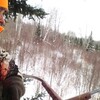
Understanding the Whitetail Rut
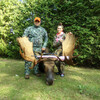
Ontario's Largest Moose by a Female

Brace Lake Outfitters
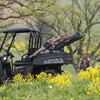
A Guide to Big Game Hunting with ATVs
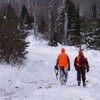
Winter Moose Hunt
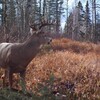
Northwest Deer
Moose Calling Tips
